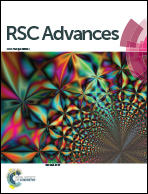The impact of gas slug flow on microfiltration performance in an airlift external loop tubular membrane reactor
Abstract
This work investigated the impact of gas slug flow on microfiltration in an airlift external loop tubular membrane reactor. A complete description for the characteristics of the slug flow was obtained as the aeration rate increased from 30 to 120 L h−1 with an interval of 30 L h−1. The shear stress of the falling film region could reach 6.37 × 10−3 Pa with the aeration rate of 90 L h−1. Experimental results showed that the growth of transmembrane pressure (TMP) could be controlled effectively by increasing the aeration rate and the optimal aeration rate in a slug flow was around 90 L h−1. However, a subsequent increase in the aeration rate had no significant effect on slowing down the TMP growth rate. Turning the constant air-flow into periodic pulsatile air-flow, low gas-velocity and high gas-velocity led to alternate operation in filtration. When the alternate interval of pulsatile air-flow was 60 s at the alternate aeration rates of 30/90 L h−1 and 60/90 L h−1, it could delay membrane fouling and save a lot of gas compared with implementing a constant air-flow of 90 L h−1. Finally, for different water outlet positions along the membrane tube, membrane fouling gradually slowed down from the bottom to the top.


 Please wait while we load your content...
Please wait while we load your content...